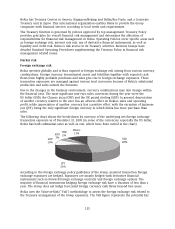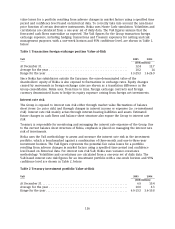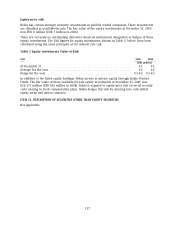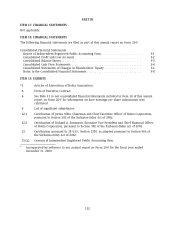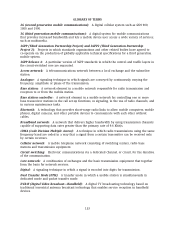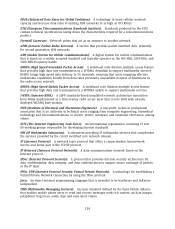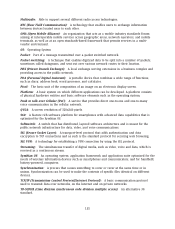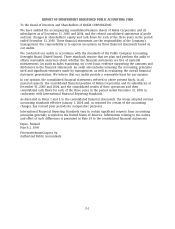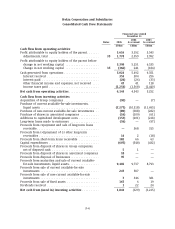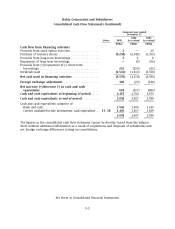Nokia 2005 Annual Report Download - page 136
Download and view the complete annual report
Please find page 136 of the 2005 Nokia annual report below. You can navigate through the pages in the report by either clicking on the pages listed below, or by using the keyword search tool below to find specific information within the annual report.EDGE (Enhanced Data Rates for Global Evolution):
A technology to boost cellular network
capacity and increase data rates of existing GSM networks to as high as 473 Kbit/s.
ETSI (European Telecommunications Standards Institute):
Standards produced by the ETSI
contain technical specifications laying down the characteristics required for a telecommunications
product.
Firewall Gateways:
Network points that act as an entrance to another network.
GPRS (General Packet Radio Services):
A service that provides packet switched data, primarily
for second generation GSM networks.
GSM (Global System for Mobile Communications):
A digital system for mobile communications
that is based on a widely accepted standard and typically operates in the 900 MHz, 1800 MHz, and
1900 MHz frequency bands.
HSDPA (High Speed Downlink Packet Access):
A wideband code division multiple access feature
that provides high data rate transmission in a WCDMA downlink to support multimedia services.
HSDPA brings high speed data delivery to 3G terminals, ensuring that users requiring effective
multimedia capabilities benefit from data rates previously unavailable because of limitations in
the radio access network.
HSUPA (High Speed Uplink Packet Access):
A wideband code division multiple access feature
that provides high data rate transmission in a WCDMA uplink to support multimedia services.
I-HSPA (Internet-HSPA):
A 3GPP standards-based simplified network architecture innovation
from Nokia implemented as a data overlay radio access layer that can be built with already
deployed WCDMA base stations.
IEEE (Institute of Electrical and Electronics Engineers):
A non-profit, technical professional
association that is an authority in technical areas ranging from computer engineering, biomedical
technology and telecommunications, to electric power, aerospace and consumer electronics, among
others.
IETF (The Internet Engineering Task Force):
An international organization consisting of over
80 working groups responsible for developing Internet standards.
IMS (IP Multimedia Subsystem):
A subsystem providing IP multimedia services that complement
the services provided by the circuit switched core network domain.
IP (Internet Protocol):
A network layer protocol that offers a connectionless Internetwork
service and forms part of the TCP/IP protocol.
IP Network (Internet Protocol Network):
A data communications network based on the
Internet protocol.
IPSec (Internet Protocol Security):
A protocol that provides Internet security architecture for
data confidentiality, data integrity, and data authentication to support secure exchange of packets
at the IP layer.
IPSec VPN (Internet Protocol Security Virtual Private Network):
A technology for establishing a
Virtual Private Network connection by using the IPSec protocol.
Java:
An object-oriented programming language that is intended to be hardware and software
independent.
MMS (Multimedia Messaging Services):
An open standard defined by the Open Mobile Alliance
that enables mobile phone users to send and receive messages with rich content, such as images,
polyphonic ring tones, audio clips and even short videos.
134



